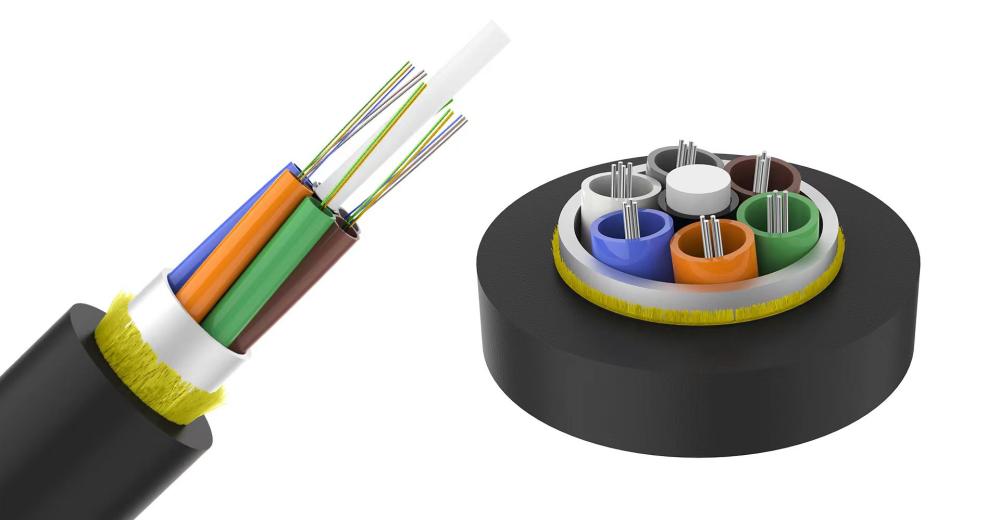Communication has always proven difficult in mountainous regions because of the challenging territory alongside unpredictable weather elements. The traditional communication networks experienced unstable service delivery which prevented remote communities from connecting properly to global networks. The introduction of optical fiber together with cable technology now governs mountainous area connectivity by establishing dependable fast communication networks for hard-to-reach locations.

The Challenges of Mountainous Area Communication
Communication infrastructure installation becomes more difficult due to the special conditions found in mountain regions. The combination of awful weather conditions and steep terrain along with landslides and thick vegetation makes it hard to install regular communication lines. Supporting infrastructure located in these challenging locations demands extensive monetary resources which need ongoing technological assistance. The development of optical communication technologies that resist weather conditions along with remaining cost-effective became possible through addressing mountainous area communication challenges.
Optical Fiber: The Backbone of Modern Communication
Optical fiber and cable have proven themselves as the most suitable technology for connecting mountain areas by breaking down communications limitations. Modern data transmission through optical fibers operates using light signals to achieve superior speed performance than traditional copper wired systems. The technology allows constant data transmission over extended distances which makes it suitable for remote regions.
The capability of optical communication systems to establish stable network transmissions remains unaffected by geographical limitations is its most beneficial aspect. The technical characteristics of fiber optic cables prevent wireless network disruptions through natural obstacles which include mountains and valleys. The reliability of optical technology proves essential for both typical communication requests and emergency settings that need instant access to life-saving information.

Benefits of Fiber Optic Cables in Mountainous Areas
1. Reliable Internet and Telephone Services
Within mountain communities both telephone and internet services must be considered vital necessities. Residents receive steady high-speed broadband connectivity from optical fiber and cable which permits them to connect with loved ones and use online resources along with doing business efficiently.
2. Empowering Remote Education
Mountainous areas suffer from educational challenges because these areas typically lack sufficient resources together with connectivity. Fiber optic networks deliver remote students in isolated villages seamless access to both online learning systems along with interactive virtual classes and distant teaching resources. The development of mountainous area communication systems has created better learning opportunities throughout every age group in mountainous areas.
3. Enhancing Telemedicine Services
Medical facilities along with professional medical staff are insufficient throughout distant regions that lead to poor health service quality. Telemedicine benefits under optical communication technology provides consultation services that permit mountain residents to communicate with specialists at urban hospitals. Healthcare accessibility improved through video consultation with remote diagnosis services which decreased the requirement for time-consuming expensive patient travel.
4. Boosting Economic Development
Mountain communities now have better economic possibilities thanks to their connection to dependable internet networks. Through online marketing platforms farmers together with local artisans can sell their products to distant customers beyond their local area boundaries. The installation of enhanced communication networks generates both direct investment funding opportunities and tourism growth together with employment possibilities thus creating overall enhanced regional economic development.
5. Disaster Management and Emergency Response
Mountain villages suffer from natural disaster isolation which creates trouble for emergency response teams to reach these areas. Emergency communication efficiency increases when fiber optic networks become operational. Necessary warnings from authorities become possible alongside prompt rescue coordination and efficient delivery of assistance to affected regions through such networks.


The Role of ASU Cable in Mountainous Areas
ASU cable functions among other fiber optic cables to serve as a vital element which strengthens communication in mountainous environments. The design of ASU (Aerial Self-Supporting) cables target overhead installations thus they become suitable for deployment in inaccessible terrain areas where underground cables cannot function properly.
Three main characteristics define ASU cable operation.
ASU cable endures through heavy snowfall and sustained rainfall and powerful wind conditions.
The system enables simple hanging from poles which eliminates time-consuming digging procedures.
A cost-effective solution for remote areas exists because ASU cable needs low maintenance and delivers durable performance over time.
Service providers who implement ASU cable extend fiber optic connectivity beyond inaccessible areas which lets even isolated villages access contemporary communication technologies.


The Future of Mountain Communication
New technological developments will enhance optical fiber and cable infrastructure in mountain areas where connectivity became better due to recent advancements. The upgraded optical communication technology leads to faster data transmission while minimizing system delays and blending with 5G networks for streamlining cross-mountain zone connections. The pace of investments leads to a diminishing digital gap which then allows all remote areas access to fast internet connections to drive social and economic development.
The implementation of optical fiber and cable networks initiated a modern connectivity wave that reshapes all mountain area lifestyles including professional activity and communication methods. Through breaking down geographical constraints fiber optic technology delivers essential services such as education and medical care and business potential and rescue capabilities to mountain communities. ASU cable continues to enhance communication network growth across difficult terrain by offering a solution that combines durability with easy installation procedures. The continual development of technology ensures mountainous area communication continues to improve to create a digital world where all communities stay connected.

 0755-23179541
0755-23179541  sales@oyii.net
sales@oyii.net